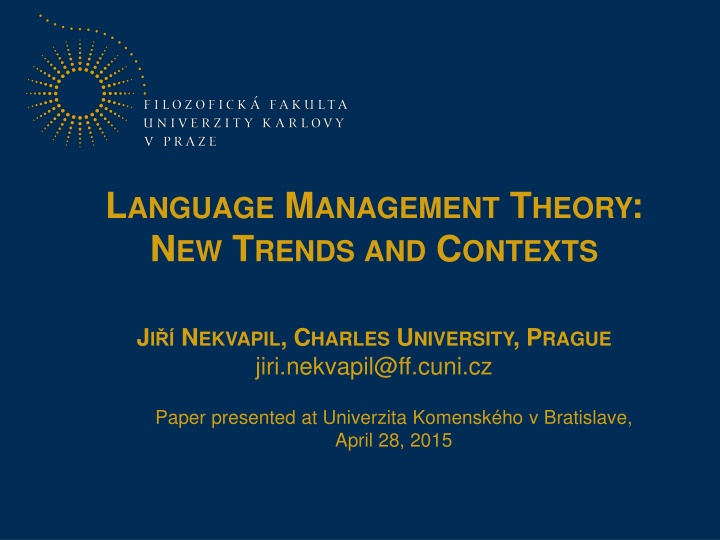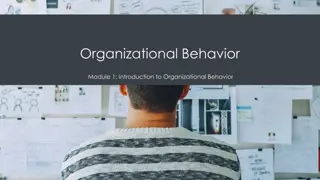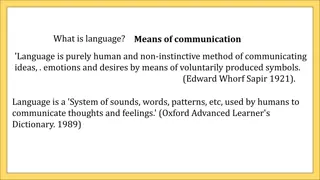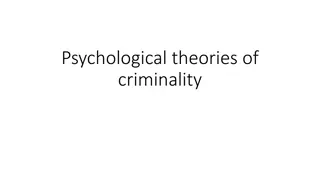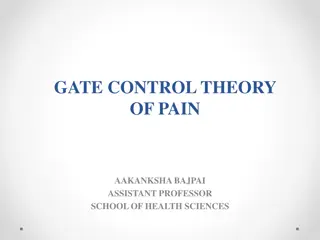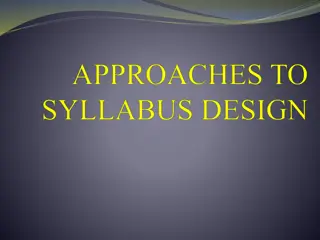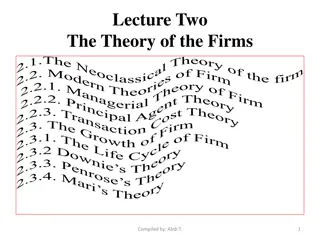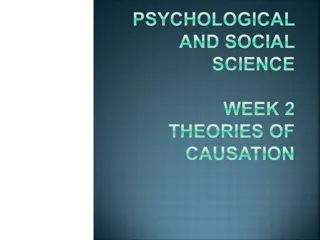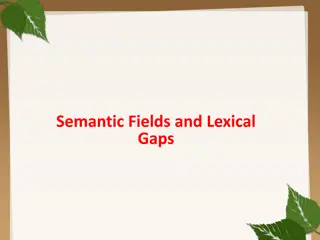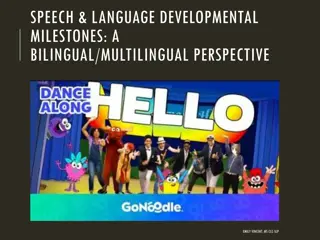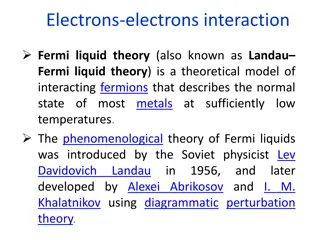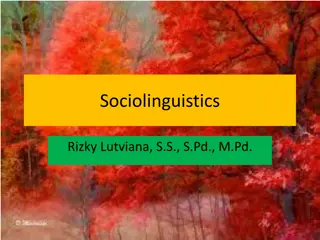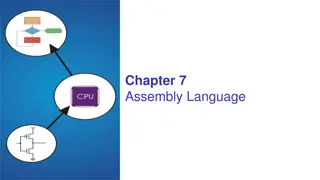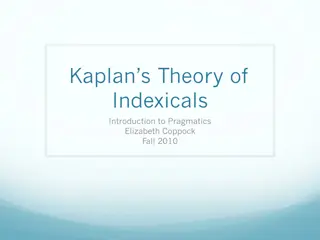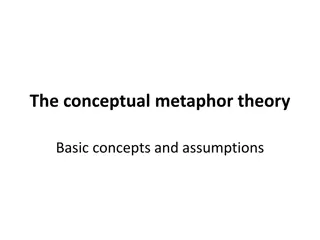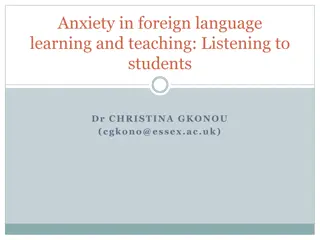Language Management Theory: Insights and Examples
Language Management Theory (LMT) with insights on language management activities, basic features, usage, contexts, and trends. Examples from Czech TV, a French minority school in Ontario, and bilingual street signs. Discover how language management influences communication in various settings.
Download Presentation

Please find below an Image/Link to download the presentation.
The content on the website is provided AS IS for your information and personal use only. It may not be sold, licensed, or shared on other websites without obtaining consent from the author.If you encounter any issues during the download, it is possible that the publisher has removed the file from their server.
You are allowed to download the files provided on this website for personal or commercial use, subject to the condition that they are used lawfully. All files are the property of their respective owners.
The content on the website is provided AS IS for your information and personal use only. It may not be sold, licensed, or shared on other websites without obtaining consent from the author.
E N D
Presentation Transcript
LANGUAGE MANAGEMENT THEORY: NEW TRENDS AND CONTEXTS JI NEKVAPIL, CHARLES UNIVERSITY, PRAGUE jiri.nekvapil@ff.cuni.cz Paper presented at Univerzita Komensk ho v Bratislave, April 28, 2015
Structure of the presentation 1. Examples and concept of language management (LM) 2. Basic features of Language Management Theory (LMT) 3. Doing and using LMT: the infrastructure 4. Various contexts for LMT 5. Select trends in LMT 2
What is language management (LM) Language management is understood broadly, as any sort of activity aimed at language or communication, in other words, at language as a system as well as at language use Or, briefly, acts of attention to language or communication 3
Examples of LM: Czech TV, a debate TV presenter: t mata o kter ch bude dnes e , mo n pozn te u podle jmen p n kter kte p ijali dne n pozv n . ( the topics which will be talked about today you may recognize even from the names of the gentlemen who (Non- Standard) who (Standard) have accepted today s invitation.) 4
A French minority school located in a large English- speaking city in the territory of Ontario, Canada (from Heller 2001: 225) Teacher: pourquoi lit-on? Michel: pour relaxer Teacher: pour se d tendre, relaxer c est anglais English translation: Teacher: why do we read? Michel: to relax Teacher: to se d tendre (relax), relax is English 5
esk Tn: Polish text painted out on a bilingual Czech-Polish street sign (from Sloboda et al. 2010) 6
From a fitness centre in the Czech Republic: PLEASE DO NOT BRING AND LEAVE ENY VALUABLE THINK HERE. IF YOU HAVE SOMETHINGS VALUABLE PLEASE ASK RECEPTIONIST TO KEEP IT IN SAFE 7
From an English sign in a meeting room of a Japanese company operating in the Czech Republic if any participant wants to say something, he/she has to speak officially in English. Czech, Spanish or Japanese language is prohibited in company meetings. 8
Organized LM and simple LM 1. Activities aimed at language or communication can be undertaken by an institution (e.g. the ministry of education, which makes decisions regarding mandatory foreign languages in a given country), (=organized LM) 2. but also by individuals in particular interactions (when, for example, we switch to another language variety because we note that our communication partner does not understand us well, or when we begin to speak more slowly because we note that our communication partner does not understand us well, but we are not able to switch to another language variety, because we do not have competence in any other variety). (=simple LM) 10
Starting Point of Languge Management Theory In language use two processes can be differentiated: (1) production and interpretation of utterances or communicative acts (= linguistic behavior) (2) activities whose object is production and interpretation of the utterances or communicative acts, that is, management (= behavior-toward-language in J. Fihsman s wording, or metalinguistic behavior) 11
Three Basic Features of the Language Management Theory (LMT) (1) Interplay of management as it appears in concrete interactions ( simple management ) and management taking place in institutions ( organised management ) micro-macro linkage (2) Processual character of management (noting, evaluation, adjustment design, implementation) (3) Connection between language management (in the narrow sense) and communicative and socio-cultural (including socio-economic) management 12
One more merit of LMT A clear delimitation of its scope with respect to the traditional interests of structural/generative linguistics As distinct from this kind of linguistics which concerns with the production or generation of sentences (utterances, communicative acts), LMT addresses just their management In this sense LMT is complementary to the traditional structural/generative linguistics, and thus it is relatively easy to integrate LMT in the subject-matter of linguistics 13
Infrastructure - Language management website: <http://languagemanagement.ff.cuni.cz> - LMT in university courses - LM symposia (Prague, Tokyo) - New publications: - Special issue of International Journal of the Sociology of Language (2015) - Special issue of Slovo a slovesnost (2014) - Jezi na kultura: Program i naslije e Pra ke kole. Zagreb: Srednja Europa, 2015 14
Papers translated in Croatian and included in Petar Vukovi (ed.), Jezi na kultura: Program i naslije e Pra ke kole. Zagreb: Srednja Europa, 2015. Ji Haller: Probl m jazykov spr vnosti. V clav Ertl: Dobr autor. V clav Ertl: O germanizmech. Vil m Mathesius: O po adavku stability ve spisovn m jazyce. Bohuslav Havr nek: koly spisovn ho jazyka a jeho kultura. Roman Jakobson: O dne n m brusi stv esk m. Jan Muka ovsk : Jazyk spisovn a jazyk b snick . [Bohuslav Havr nek:] Obecn z sady pro kulturu jazyka. Eugen Pauliny: N re ie a spisovn jazyk. Milo Dokulil: K ot zce normy spisovn ho jazyka a jej kodifikace. Petr Sgall: O - . Josef Ru i ka, Probl my jazykovej kultury. Josef Ru i ka, T zy o sloven ine. Alois Jedli ka: V vojov dynamika sou asn spisovn e tiny. Franti ek Dane : Dialektick tendence ve v voji spisovn ch jazyk . J n Horeck , K te rii spisovn ho jazyka. Zden k Star : Ve jm nu funkce. V clav Cvr ek: Koncept minim ln intervence. Ji Nekvapil: The integrative potential of language management theory. [= upravljanje jezikom] Ji V. Neustupn : Sociolinguistic aspects of social modernization. 15
Language Management Theory as one approach in Language Policy and Planning According to Baldauf (2012) there are four basic approaches: 1) the neoclassical approach (Kaplan & Baldauf) 2) the language management approach (Jernudd & Neustupny) 3) the domain approach (Spolsky) 4) the critical approach (Tollefson) 16
Language management label with different meanings Three uses (according to Sanden 2014): LM as a theory (Neustupn & Jernudd) LM as a sub-concept (Spolsky) LM as a business strategy tool (Feely & Harzing; Piekkari) 17
Language management as a sub-concept (Bernard Spolsky) Spolsky (2004) Language Policy. CUP. Spolsky (2009) Language Management. CUP Here, language management is one of the three components of the concept of language policy, that is, in addition to language practices and language believes (ideologies) LM is defined as the explicit and observable effort by someone or some group that has or claims authority over the participants in the domain to modify their practices or beliefs. (Spolsky 2009:4) 18
Language management as a business strategy tool The approach based in organisational and management studies: Feely and Harzing (2003) Language management in multinational companies Rebecca Piekkari Language as a variable in business studies Strategic use of language from the managerial point of view An instrumental approach A research field developed by international management scholars 19
Emerging discourse of language management: three traditions therein 1. Israeli/American tradition (Spolsky) 2. European/Asia-Pacific tradition (Neustupn & Jernudd) 3. African tradition (Webb, Mwaniki) Mwaniki, M. (2011). Language management in Africa: The dialectics of theory and practice. Southern African Linguistics and Applied Language Studies, 29 (3), 243 257 20
Kimura (2013) in his review of Nekvapil & Sherman (2009) So k nnte man aus diesem Sammelband drei Forschungsrichtungen der SMT erkennen: die mitteleurop ische , die sich ber Sprachmanagement in mehrsprachigen Gesellschaften Gedanken macht, die japanische , die verschiedene Aspekte von konkreten Interaktionen detailiert herausarbeitet, und die australische , die Erfahrungen von Individuen ergr ndet. Jede Richtung hat seine Vorz ge und Schw chen. Methodologisch ist beim mitteleurop ischen Typ die Einbettung in den gesellschaftlichen Kontext am deutlichsten, w hrend die Analyse konkreter Kontaktsituationen eher in den Hintergrund f llt. Beim japanischen Typ, bei dem die konkreten Daten voll ausgewertet werden, fehlt andererseits der Bezug zum Alltag au erhalb der betrachteten Situation. Und beim australischen Typ, bei dem Berichte oft als Daten eine gro e Rolle spielen, wird die Aufmerksamkeit stark auf die Auffassungen der Beteiligten, aber weniger auf die Analyse realer Interaktionen gelenkt. 21
Central European, Japanese and Australian uses of LMT Central Europe: interested in societal multilingualism, the issue of (state) power Japan: detailed analysis of particular interactions, mostly induced in the university setting Australia: focus on the experience of individuals as reported in interviews and language diaries, academic contact situations 22
The issue of the beginning and end of the management process ( simple management ) a) noting language phenomenona, e.g.deviations from the norm or expected course of communication b) evaluation of these deviations c) designing adjustments d) implementation of adjustments xxxxxxxxxxxxxxxxxxxxxxxxxxxxxxxxxxxxx e) feedback (Goro Kimura) 23
Language problems and language gratifications If a noted phenomenon is evaluated negatively, it counts as an inadequacy in LMT. If such inadequacies can t be removed by routine interactional means such as repair sequences and occur repeatedly, they may be perceived as problems by the speakers. I. Lansty k s typology of problems (SaS 2014) Gratification a noted phenomenon evaluated positively 24
Gratifications In particular interactions ( he speaks faultless English ) As the object of organized LM Neustupn (1994: 66): more than ever before we must seek rigorous methods to face contact situations, solve its problems and reinforce its gratifications Linguistic, communicative and socio-cultural gratifications (the phenomenon of vogue, including vogue expressions) 25
Role of language ideologies in language management In serving as the basis for norms or expectations for language behaviour, the ideologies guide, influence or underlie what can be noticed as a deviation from the norm, what can be evaluated (negatively, positively or otherwise) and so forth, that is, they guide management processes. An example: the ideology of linguistic purism 26
Language ideologies identified in our research In a large multinational company operating in the Czech Republic, we have identified language ideologies related to the use of Czech, Vietnamese, German and English. These ideologies can be labelled as follows: the ideology of the difficult/easy language the ideology of the small/large language the ideology of the completely different language the ideology of the ugly/beautiful language the ideology of the absolute instrumentality of a particular language 27
Organized (Institutional) Management a. Management acts are trans-interactional b. Communication about management takes place c. A social network or even an institution (organization) is involved d. Theorizing and ideologies are at play to a greater degree and more explicitly e. In addition to language as discourse, the object of management is language as system 28
Organized LM in context of other management and organizational studies Kimura (2013, 2014), Lansty k (2014) Inspired by models of the management of social, economic or policy processes, particularly problem management, decision- making or planning in general The issue of processes in organized LM; are there identical, similar or different phases in organized and simple management? The issue of the compatibility of LMT and other management and organizational studies Etic versus emic approaches 29
New topics Legitimization of language management: the case of so-called Language Academies Typology of language gratifications Management/Non-management of variation of Czech in the university setting Dovalil, V. (2014). Language management theory as a basis for the dynamic concept of EU language law. Current Issues in Language Planning, First published online. Sherman, T. & velch, J. (2014). Grammar Nazis never sleep : Facebook humor and the management of standard written language. Language Policy. First published online. 30
Methods of researching language management Analysis of naturally occuring conversations or interactions including their ethnographic background (the analysis thus relies on the implementation phase of language management, on corrections , which are easily visible) Follow-up interviews (oriented to mental phases of language management. The researcher: Were you conscious of that when she corrected you? ) Semi-structured and narrative interviews, language biographies (problems with management summaries, extreme case formulations. The interviewee: I have never used , I always say ) A compromise: Interaction interview as a means of reconstructing the actual course of interaction 31
Methods of researching language management, cont. The researchers use also content analysis of documents (discourse analysis) and linguistic landscape analysis 32
Concluding speculations What is a driving force of the current trends in LMT? Identification/feeling of the inner problems of LMT New empirical research Stimulating force of contexts 33
Thank you D kuji 34
